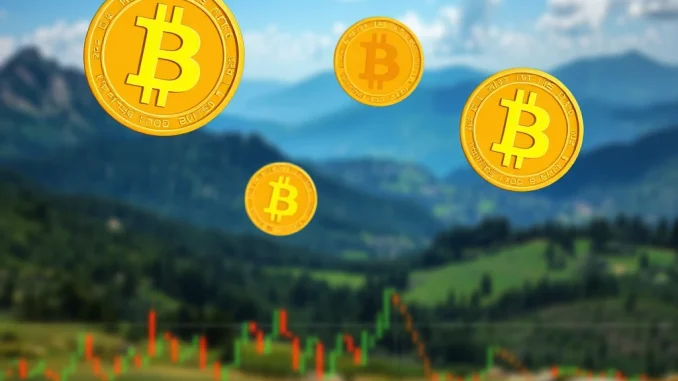
Are you watching the Bitcoin market? If so, you’ve probably noticed the constant flow of data attempting to explain price movements and investor behavior. One key area analysts focus on is on-chain data, which provides insights directly from the blockchain. Recently, a significant report from Glassnode highlighted a notable shift, indicating increased interest from speculative investors.
What is Driving Bitcoin’s Short-Term Holder Activity?
According to leading on-chain analytics firm Glassnode, a specific metric tracking recent Bitcoin movements saw a substantial spike. This metric, known as ‘Hot Capital’, specifically monitors BTC that has moved within the last 24 hours and the last week. Glassnode reported via their X account that on April 28, this Hot Capital metric reached an impressive $39.1 billion. This figure represents the highest level recorded since February 10, marking a significant return of liquidity and trading volume among newer market participants.
The surge in this metric is particularly interesting because it directly correlates with activity from what are often termed ‘short-term holders’. These are typically investors who have acquired Bitcoin relatively recently and are more likely to trade based on immediate price fluctuations rather than holding for the long term. Their increased activity often suggests a higher degree of speculation in the market.
Glassnode’s Hot Capital Metric Explained
To better understand the significance of this report, let’s break down the Hot Capital metric:
- Definition: It measures the total value of Bitcoin (in USD) that has been transacted on the blockchain within a very recent timeframe (usually 24 hours to 7 days).
- What it Indicates: High values suggest a lot of BTC is changing hands quickly. This can be due to trading, rebalancing, or speculative buying/selling.
- Who is Involved: While not exclusively, a spike in Hot Capital is often associated with increased participation from short-term holders and traders looking to capitalize on near-term price movements.
- Why it Matters: Elevated Hot Capital can sometimes precede periods of increased volatility as short-term holders are generally more reactive to market news and price swings than long-term holders.
The fact that this metric hit its highest point since February 10 suggests that the market structure in late April saw a return to activity levels not seen in over two months, potentially indicating renewed confidence or aggressive positioning from this cohort of investors.
Interpreting On-Chain Data for Crypto Market Analysis
Understanding metrics like Hot Capital is crucial for comprehensive crypto market analysis. On-chain data provides a transparent view of network activity, allowing analysts to peer beyond simple price charts and understand the underlying behavior of market participants. While price action reflects sentiment, on-chain data often reveals the conviction (or lack thereof) behind those movements.
A rise in short-term holder activity doesn’t inherently signal a bullish or bearish trend, but it does signal increased market engagement and potentially higher sensitivity to news and price changes. It suggests that a larger portion of the circulating supply is in the hands of those more likely to sell or buy quickly.
The Role of Short-Term Holder Activity
The distinction between short-term and long-term holders is fundamental in on-chain data analysis. Long-term holders (LTHs) are often seen as the ‘strong hands’ who have held Bitcoin for extended periods (typically over 155 days) and are less likely to sell during minor pullbacks. Short-term holders (STHs), conversely, have held BTC for less than 155 days and are more susceptible to fear and greed, making them more active traders.
When STH activity spikes, as reported by Glassnode, it means a larger volume of Bitcoin is potentially vulnerable to quick sell-offs if prices dip, or could fuel rapid upward moves if momentum builds. This increased velocity of coins can lead to heightened volatility compared to periods dominated by LTH accumulation.
What Does This Mean for Bitcoin?
The spike in short-term holder activity could have several implications for the Bitcoin market:
- Increased Volatility: More active traders mean quicker reactions to news and price changes, potentially leading to larger price swings.
- Sensitivity to Sentiment: The market might become more sensitive to general crypto news and macroeconomic factors as short-term holders react swiftly.
- Potential for Liquidity: While speculative, increased activity also means more liquidity, making it easier for large trades to be executed.
- Indicator of Interest: Regardless of the holding period, increased movement indicates renewed interest and capital flowing into the asset, even if short-term focused.
For traders and investors, monitoring this metric alongside others can provide valuable context. A sustained high level of Hot Capital, especially if accompanied by other indicators, might suggest a market phase characterized by rapid price discovery or potential shakeouts.
Conclusion: Staying Informed with On-Chain Metrics
The recent report from Glassnode highlighting the significant spike in Bitcoin’s Hot Capital metric is a crucial piece of on-chain data for anyone following the market. It clearly signals a resurgence of activity among short-term holders and speculative investors, reaching levels not seen in months. While this doesn’t provide a crystal ball prediction, it offers valuable insight into the current market structure and the types of participants who are currently most active.
Understanding metrics like Hot Capital is vital for conducting thorough crypto market analysis. It reminds us that behind the price charts are real transactions and varying investor behaviors. As the market continues to evolve, paying attention to these on-chain signals, especially those reported by reputable firms like Glassnode, can provide a deeper understanding of underlying trends and potential future volatility driven by increased short-term holder activity.



